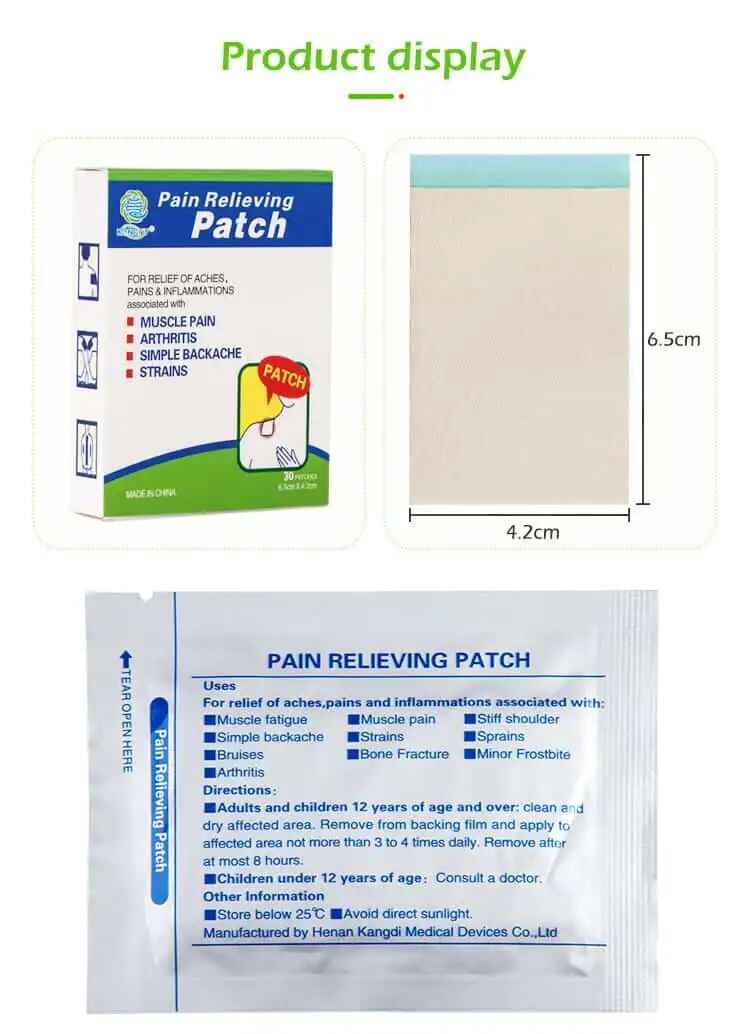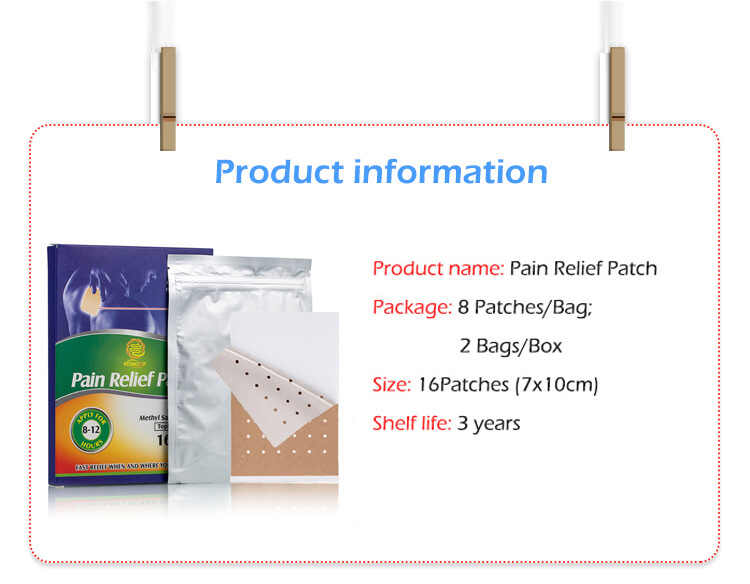How Will Smart Technology Impact Pain Relief Gel Patches?
The global health and wellness industry is undergoing a digital transformation, and Pain Relief Gel Patches are no exception. As wearable health tech becomes more sophisticated and accessible, smart pain relief gel patches—integrating sensors, microcontrollers, temperature regulation, and Bluetooth connectivity—are emerging as the future of pain management.
In this article, we will explore how smart technology is reshaping the landscape of traditional and Custom Pain Relief Gel Patches, what this means for consumers, and how brands and businesses can work with a Pain Relief Gel Patches Manufacturer, Pain Relief Gel Patches OEM, or Pain Relief Gel Patches Supplier to remain competitive in this evolving market.

1. The Evolution from Traditional to Smart Patches
Traditional Pain Relief Gel Patches are designed to deliver medication or natural extracts (like menthol, camphor, or CBD) through the skin directly to the site of pain. They are:
Cost-effective
Easy to use
Portable
Non-invasive
However, they lack real-time adaptability and data feedback, which are essential in modern personalized healthcare. Smart patches bridge this gap by incorporating biometric sensors, temperature control systems, and app connectivity, enabling:
On-demand drug delivery
Heat regulation
Tracking of pain patterns and user behavior
This shift is pushing Pain Relief Gel Patches OEM providers to adopt high-tech manufacturing capabilities and partner with healthcare IoT innovators.
2. Key Features of Smart Pain Relief Gel Patches
A. Temperature-Sensitive Delivery
Smart patches can detect skin temperature and activate heat therapy or cooling mechanisms depending on the user’s condition. This is especially useful for:
Muscle spasms
Arthritis pain
Menstrual cramps
A Custom Pain Relief Gel Patches solution can include thermoelectric elements embedded within the patch structure, helping to modulate treatment in real time.
B. Sensor-Based Drug Regulation
Advanced patches can monitor parameters like:
Skin hydration
Pain intensity (through self-reporting or EMG)
Inflammation levels
With this data, smart patches can regulate medication dosage, helping users avoid overuse while maximizing therapeutic effectiveness—an attractive innovation for healthcare providers and regulatory bodies alike.
C. Mobile App Integration
Smart Private Label Pain Relief Gel Patches connected to mobile apps enable users to:
Track pain episodes
Adjust dosage via app settings
Share health data with physicians
Receive usage reminders and analytics
This transforms the pain patch from a passive tool into an interactive pain management system, redefining user experience.
3. Market Drivers Behind Smart Patch Development
A. Personalized Healthcare Demand
Consumers are seeking precision pain relief that adapts to their lifestyle and condition. A static patch no longer suffices. Smart patches enable:
Time-scheduled release
Pain mapping
Intelligent adjustment
Pain Relief Gel Patches Manufacturers that embrace this trend can help brands deliver next-generation personalized pain solutions.
B. Growth of Telemedicine and Remote Monitoring
With telehealth services booming post-pandemic, remote pain monitoring via smart patches provides:
Real-time patient data for physicians
Reduced need for in-person visits
Enhanced treatment compliance
Smart Pain Relief Gel Patches OEM services can be integrated into telehealth platforms, providing clinics and health apps with innovative hardware for better remote care.
C. Aging Population and Chronic Pain
Older adults frequently suffer from chronic conditions like:
Osteoarthritis
Fibromyalgia
Neuropathy
Smart patches equipped with gentle electric stimulation (TENS) or heat therapy, and combined with consistent release of analgesics, can significantly improve quality of life. Pain Relief Gel Patches Suppliers targeting elderly care markets will see increasing demand for smart customization.
4. Opportunities for Brands and OEM Clients
A. High-Value Differentiation
For emerging health brands, launching smart Private Label Pain Relief Gel Patches offers:
Unique value propositions
Premium pricing opportunities
Brand leadership in innovation
Collaborating with a Pain Relief Gel Patches Manufacturer that offers smart OEM integration services—such as electronics embedding, app development, and compliance testing—can be a game changer.
B. Data Monetization and Health Ecosystems
Smart patches generate valuable user data, including:
Pain response times
Activity levels
Treatment efficacy
Brands can build ecosystems that integrate patches with wearables, sleep trackers, or wellness apps, increasing user engagement and creating new monetization channels through subscription services, AI health recommendations, or usage analytics.
5. Challenges to Consider in Smart Patch Development
A. Regulatory Compliance
Integrating electronics into gel patches introduces medical device-level regulation, including:
FDA 510(k) approval in the U.S.
CE marking for the EU
ISO 13485 certification
A capable Pain Relief Gel Patches OEM must have strong experience in navigating these regulatory frameworks to ensure product launch viability.
B. Production Complexity and Cost
Adding smart features increases:
R&D costs
Material sourcing complexity
Unit production costs
However, the long-term returns through brand premiumization and recurring customer engagement often outweigh the initial investment. Selecting a Pain Relief Gel Patches Supplier that provides scalable smart patch solutions helps mitigate risks and reduce costs.
C. Power Supply and Patch Size
Smart patches require power, typically from:
Thin-film batteries
NFC charging
Flexible solar panels
Balancing battery life, patch size, and comfort is a key design challenge. Custom Pain Relief Gel Patches must be co-developed with electronics engineers for optimal user experience.
6. Future Outlook: Where Smart Gel Patches Are Headed
The future of Pain Relief Gel Patches lies in convergence:
AI + Smart Gel: AI algorithms will predict optimal drug release based on user behavior.
Wireless Drug Refill Systems: Refilling the patch digitally with prescribed doses.
Nano-sensor Technology: Detecting biomarkers in sweat or interstitial fluid for hyper-personalized pain therapy.
Pain Relief Gel Patches Manufacturers who invest in R&D and partner with health tech startups or university labs will define this next frontier.
Conclusion
Smart technology is not replacing traditional Pain Relief Gel Patches—it is elevating them. From responsive temperature control and biometric feedback to app integration and AI-powered personalization, smart patches offer a transformative leap in how pain is managed.
For brands looking to innovate, working with a future-forward Pain Relief Gel Patches OEM or Pain Relief Gel Patches Supplier that understands both transdermal and smart device technology is essential. The businesses that embrace this wave will not only meet rising customer expectations—but lead the pain relief revolution.
Related Questions and Answers
Q1: What are smart Pain Relief Gel Patches?
A1: These are patches integrated with sensors, temperature control, or wireless connectivity that offer intelligent, customizable pain relief.
Q2: How do smart patches differ from traditional Custom Pain Relief Gel Patches?
A2: Traditional patches passively deliver ingredients, while smart patches use data and technology to adjust delivery and track usage in real time.
Q3: Can Private Label Pain Relief Gel Patches be developed as smart patches?
A3: Yes. Many OEMs now offer customizable smart patch solutions that can be branded and formulated to meet specific needs.
Q4: Are smart pain patches safe and FDA-approved?
A4: If developed according to medical device standards (e.g., FDA, CE, ISO 13485), they are safe and legally compliant.
Q5: What should I look for in a Pain Relief Gel Patches Manufacturer if I want to develop a smart patch?
A5: Look for expertise in medical electronics, transdermal R&D, compliance, and end-to-end OEM/ODM production capabilities.






